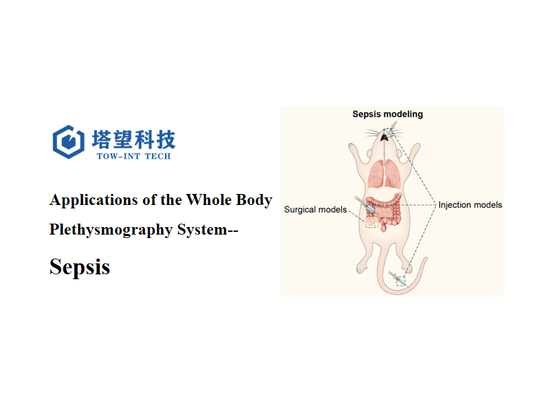
#Industry News
Obesity
Animal Energy Metabolism System-EM
Overview of Obesity
Obesity is a chronic condition and a key contributor to the development of hypertension, coronary heart disease, stroke, type II diabetes, dyslipidemia, and other chronic illnesses. A significant cause of obesity and metabolic syndrome is the dysregulation of energy metabolism, primarily due to excessive intake of high-energy foods.
Research Methods
The Animal Energy Metabolism System (EM-4M/R, Tow-Int Tech) is designed for real-time monitoring of animals' basic physiological parameters and spontaneous activity. It includes features such as gas analysis, food and water intake monitoring, body weight measurement, XYZ-axis activity tracking, and running wheel activity monitoring. This system allows for qualitative and quantitative analysis of animal behavior and its relationship with respiratory metabolism. It is widely used in studies of metabolic diseases, circadian rhythms, and sleep, where continuous monitoring of basal metabolic indicators and daily activity is required.
During the experiment, animals can move freely within a homecage. The system uses indirect calorimetry to monitor parameters such as oxygen consumption rate (VO2), carbon dioxide production rate (VCO2), respiratory exchange ratio (RER), and heat production (EE) in real-time. Additionally, the system includes a monitored food trough and water bottle to record feeding and drinking behaviors. The system can simultaneously monitor 4-16 animals.
Key Measurements
Oxygen Consumption (O2 Consumption, ml/kg/hr): The volume of oxygen consumed per unit body weight per unit time.
Carbon Dioxide Production (CO2 Production, ml/kg/hr): The volume of carbon dioxide produced per unit body weight per unit time.
Respiratory Exchange Ratio (RER): RER = CO2 Production/O2 Consumption.
Heat Production (Heat, kcal/kg/hr): The amount of heat generated per unit body weight per unit time.
Horizontal/Vertical Movement (Movement, counts): The amount of movement in the horizontal (XY) and vertical (Z) directions per unit time.
Food Intake (Food intake, g): The amount of food consumed.
Water Intake (Water intake, g): The amount of water consumed.
Experimental Materials
Animals: Mice, C57BL/6, 3-5 weeks old, male, 20 subjects.
Diet: High-fat diet.
Equipment: Animal Energy Metabolism System (EM-4M/R, Tow-Int Tech).
Modeling and Measurement
The mice were divided into a control group and a model group. The control group was fed a regular maintenance diet, while the model group was fed a high-fat diet to establish an obesity model over 15 weeks. In the 16th week, a 24-hour energy metabolism test was conducted.
Results
Figures 1 A-D: Show the mean values of RER, VO2, VCO2, and EE during the day, night, and overall 24-hour period
Figures 2 A-D: Display the trends of RER, VO2, VCO2, and EE over a 24-hour period
Conclusion
As shown in Figures 1A and 2A, the RER value in the obesity model stabilizes around 0.75, with a slight increase to around 0.8 during the day, indicating that fat is the primary substrate being oxidized in the obese model animals. In contrast, the control mice have an RER value around 0.85, with a night-time increase to around 0.95, suggesting that carbohydrate metabolism predominates during periods of increased activity. Higher VO2, VCO2, and EE values were observed at night due to increased activity, demonstrating a clear circadian rhythm. The Animal Energy Metabolism System is indispensable for respiratory metabolism analysis in similar models, as it accurately refer to metabolites and discuss the relationship between respiratory metabolism and physical activity in terms of activity level and energy expenditure.
References
Mengjun Zhanga,Huiyang Jiang,Lan Wu,Haoyu Lu,Hriday Bera,Xing Zhao,Xiong Guo,Xulu Liu,Dongmei Cun,Mingshi Yang."Airway epithelial cell-specific delivery of lipid nanoparticles loading siRNA for asthma treatment"[J]. Journal of Controlled Release,Volume 352.
Zhang M, Xu B, Li N, et al. All-Hydrocarbon Stapled Peptide Multifunctional Agonists at Opioid and Neuropeptide FF Receptors: Highly Potent, Long-Lasting Brain Permeant Analgesics with Diminished Side Effects[J]. Journal of Medicinal Chemistry, 2023.
Hamelmann E, Schwarze J, Takeda K, Oshiba A, Larsen GL, Irvin CG, Gelfand EW. Noninvasive measurement of airway responsiveness in allergic mice using barometric plethysmography. Am J Respir Crit Care Med. 1997 Sep;156(3 Pt 1):766-75. doi: 10.1164/ajrccm.156.3.9606031. PMID: 9309991.
Lin Y, Wu Y, Ma F, Shan C, Ma J, Li W, Pan H, Miao X, Liu J, Wang X, Ni Z. Exploration of the mechanism of Qi-Xian decoction in asthmatic mice using metabolomics combined with network pharmacology. Front Mol Biosci. 2023 Dec 13;10:1263962. doi: 10.3389/fmolb.2023.1263962. PMID: 38155957; PMCID: PMC10753777.
赵玮,俞冰,张水娟,等.应用无约束全身体积描记系统检测小鼠肺功能[J].实验动物与比较医学, 2017, 37(5):7.DOI:CNKI:SUN:SHSY.0.2017-05-008.





